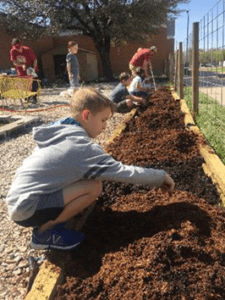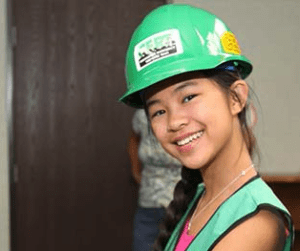Actions by young people like Greta Thunberg have received international attention and reflect the fact that youth can meaningfully address the environmental issues that concern them before they can even drive a car or vote.
Sometimes, being a kid can feel like a powerless position. Adults may assume that their years of experience mean they have nothing to learn from a younger person’s ideas, children don’t have much choice over what they spend 8 hours a day studying in school, they can’t vote although they may be old enough to understand how political decisions impact them, and there are many other aspects of their own lives that they don’t control.
However, being a kid also means thinking about things in new and exciting ways. Youth are very familiar with new technology, globalization, climate change, and other difficult issues, because they are growing up surrounded by them. This gives them a unique perspective on these issues and how they can be addressed to make the world better. In addition, youth have a lot to gain from communities coming together to create a future we actually want, rather than one that past actions may dictate. Their motivation, creativity, and critical skill sets make youth a powerful driving force behind an array of programs that bring widespread benefits.
At the Wild Center in the Adirondacks, a model for youth climate summits has emerged that connects youth with each other and with resources over the course of a 2 day summit so that they emerge with a climate action plan for their school. Through this program, students have led changes in their communities that have saved thousands of tons of waste from landfills, generated renewable electricity and heat, improved energy efficiency, and forged new links between residents, businesses, schools, and elected officials. A second example is FEMA’s Youth Preparedness Council, which brings together high school students to advance disaster preparedness efforts, including financial preparedness, citizen responder programs, and youth education. Lastly, in Carmel, Indiana, a youth-led effort called the Promise Project resulted in the city becoming the first in Indiana to pass a climate resolution.
We are lucky at NNC to have the benefits of youth action as part of our CREATE Resilience project as well. At the end of October we welcomed our second cohort of CREATE Youth Ambassadors, comprised of 14 high school students from Easton, Wilson, and Bangor school districts. These students will work with us for the next year to research mitigation strategies for the natural hazards that most impact residents of their communities and disseminate these strategy ideas through a series of hazard cards. They bring strengths in environmental science, computer science, writing, and public speaking, and are already involved in school environmental groups, student government, sports, theater and art, and other volunteer and community activities in addition to their roles at NNC. Their energy, expertise about their neighborhoods, and hard work will be invaluable in building resilience throughout these communities.
1. https://www.wildcenter.org/our-work/youth-climate-summit/summit-impacts/
2. https://www.ready.gov/kids/youth-preparedness-council
3. https://www.carmelgreen.org/


